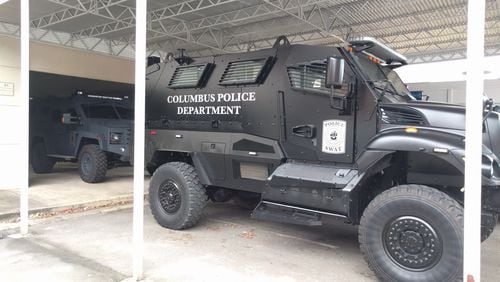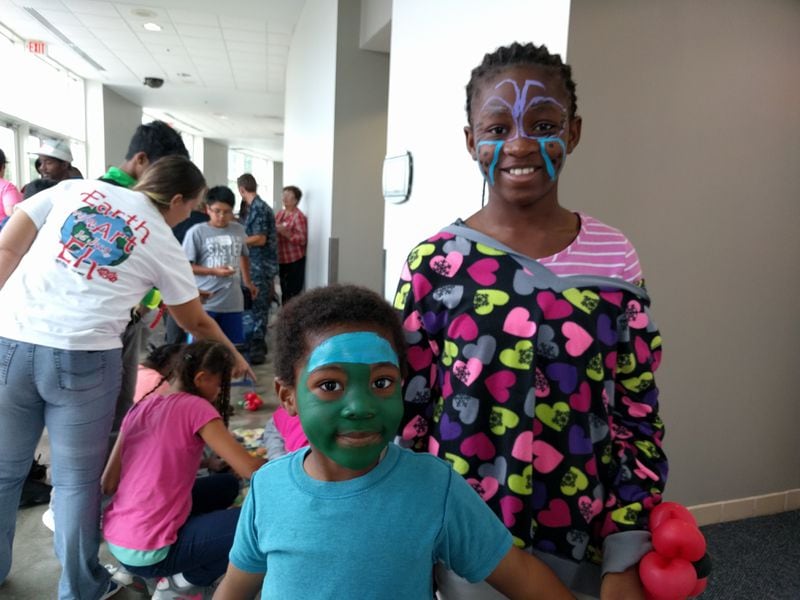Columbus officials are planning to sleep at the city's public safety building Monday night. Police, fire, emergency management and homeland security chiefs will be camped out there, orchestrating the storm response for a city of 202,000 .
All detectives and administrative officers have been geared up for street duty, for a total of 488 deployed. There are another 384 firefighters, paramedics and other emergency rescue teams ready.
IN DEPTH: What will Hurricane Irma mean for Georgia?
RELATED: Why Us Again? Southwest Georgia readies for Irma
But with winds that could tip a vehicle expected to start blowing early Monday and continue into the next day, Fire Chief Jeff Meyer is leaving it up to each company officer to decide whether it's safe to take a crew on the road.
"Our main concern is the ambulances," he said, noting that the boxy vehicles are not the most aerodynamic.
And Police Chief Ricky Boren said it may be too dangerous to send his officers on calls.
"We're not going to put their lives in jeopardy with high water, wind and electrical lines being down," he said.
The chiefs had to change plans quickly as the hurricane tracked west and it became clear, as Boren put it, that it was going to come "right over the top of Columbus." He canceled all vacations and assigned desk officers to marked cars, assigning them new unit numbers. On Sunday, they were still running drills.
Mayor Teresa Tomlinson will see her city through this storm with just months left in office. She has had a busy schedule but figured that with her second and final term near complete it was finally safe to take a short vacation.
She'd been a judge in the Miss Georgia Pageant -- it occurs in Columbus -- and had traveled with the state delegation to the Miss America contest in Atlantic City for the weekend. They arrived on Friday afternoon but before the evening reception, she'd booked a flight back home. She held a conference call at the boarding gate to declare a notice to city council that the city government would close Monday, and she wrote the press release on the plane.
On Sunday, asked which day she arrived back in Columbus, she started counting backwards, and she asked what day it was. "Seriously," she said, "it seems like two weeks."
This city is home to one of the state's seven search and rescue teams. As recently as Friday, the task force was readying to depart for Savannah to respond to was expected at the time to be a massive coastal assault. Then, Irma set course for west Georgia, and later that day the order came to stay in place.
The top concerns here: trees falling on houses, power poles blowing down and sewers failing to drain the city, which hugs the Chattahoochee River and is home to what's billed as the longest urban whitewater rafting course in the world.
Though Irma's quick turn away from the coast forced a change in plans, Meyer, the fire chief, said the teams were ready. "We've been talking about this storm since it came off the coast of Africa," he said.
Boren, Meyer and the other leaders were heading home Sunday to sleep one more night in their own beds, before their long haul in the windowless command center.
Boren had one last task before returning. "I've got to move my boat," he said.
Columbus was identified as a regional relief center for storm refugees. They were bused in from the coast, mostly from Glynn County near Florida, to the Columbus Civic Center. Kendra Assonken and her family were among the 556 sleeping there.
The 10-year-old had the purple and blue wings of a butterfly painted on her face, one of the many activities, including rock painting, that the rec center volunteers had concocted to distract the kids.
"I thought we were just going to do nothing, but then we got to do arts and crafts and have a lot of fun," she said. Her brother, David, 4, had a blue swatch of paint on his forehead and green covering his chubby cheeks.
"Ninja turtle," he explained.
Credit: Ty Tagami / AJC
Credit: Ty Tagami / AJC
Their dad, Patrick Assonken, doesn't regret the decision to take the 7-hour ride in a school bus from their home in Brunswick, even after the hurricane's turn inland. "The people are awesome," he said of the volunteers.
Among them are Atlantan Heidi Bassano, an American Red Cross volunteer acting as the shelter manager. Her husband will sit out the storm at their home near the Toco Hill Shopping Center in DeKalb County while she stays with these displaced residents. She arrived at 6 p.m. Friday and worked until 2:30 a.m. then rose less than four hours later and worked a similar schedule the next day. She does this free work because of the connections she makes with other people, she said. "The first shelter I did was Hurricane Ivan, and I just got the bug."
The rock painting was the brain child of Chandra Strait, Kim Harty and Merrill Rushin -- moms with ties to the Girl Scouts and to Columbus' thriving rock-painting and rock-hunting scene. They put the word out for volunteers on a local rock-oriented Facebook page with 22,000 members, and Rushin handpicked stones -- they had to be flat with no cracks -- from Flat Rock Sand & Gravel, a local supplier.
"I know," said Harty, "it sounds crazy."
But it worked: around a dozen girls and as many adults were on hand to keep Kendra and David Assonken and other children in good spirits.
There were scores of others working in other roles, including doctors in a mobile clinic parked outside and crews in the bowels of the building who were organizing mounds of donated water, food, toiletries and clothing.








